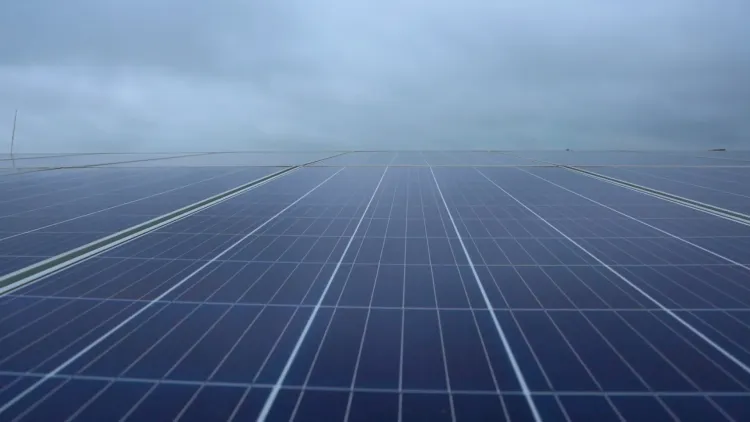Has India Overtaken Japan to Become the World’s Third-Largest Solar Energy Producer?

Synopsis
Key Takeaways
- India is now the third-largest solar energy producer globally.
- Production reached 1,08,494 GWh, exceeding Japan's output.
- The nation aims for 500 GW of non-fossil fuel capacity by 2030.
- Wind energy capacity has also seen substantial growth.
- Leadership plays a crucial role in driving renewable energy initiatives.
New Delhi, Aug 1 (NationPress) The Union Minister for New and Renewable Energy, Pralhad Joshi, has announced that India has overtaken Japan to become the third-largest solar energy producer in the world, marking a crucial milestone in the country's journey towards clean energy advancement.
India generated 1,08,494 gigawatt-hours (GWh) of solar energy, surpassing Japan's output of 96,459 GWh, according to the International Renewable Energy Agency (IRENA).
Joshi shared this information through a post on the social media platform X.
“India has outperformed Japan in solar energy production — generating 1,08,494 GWh compared to Japan’s 96,459 GWh — and has now claimed the title of the world’s third-largest solar power producer,” the Minister stated.
He further attributed this achievement to the forward-thinking leadership of Hon’ble PM Shri @narendramodi ji, emphasizing that India is at the forefront of the global clean energy movement.
IRENA, a global organization that aids countries in their shift to sustainable energy, offers extensive data and policy guidance for the advancement of renewable energy worldwide.
This progress aligns with India’s ambitious goal of reaching 500 GW of non-fossil fuel electricity capacity by 2030 through a well-rounded energy strategy.
Alongside its solar advancements, India is also broadening its wind energy initiatives.
Last month, the minister reported to Parliament that as of June 30 this year, India’s installed wind energy capacity had reached 51.67 GW.
Data provided by the minister in a written response in the Lok Sabha indicates that the wind energy capacity in the country has been growing steadily over the past three fiscal years, with 2,275.55 MW added in 2023–2024, 3,253.39 MW added in 2024–2025, and 1,637.02 MW of new capacity installed in the April–June quarter of 2025–2026.
With 13,816.68 MW of installed capacity, Gujarat leads the nation in wind power generation. Tamil Nadu follows with 11,830.36 MW, while Karnataka ranks third with 7,714.74 MW of installed wind power.









